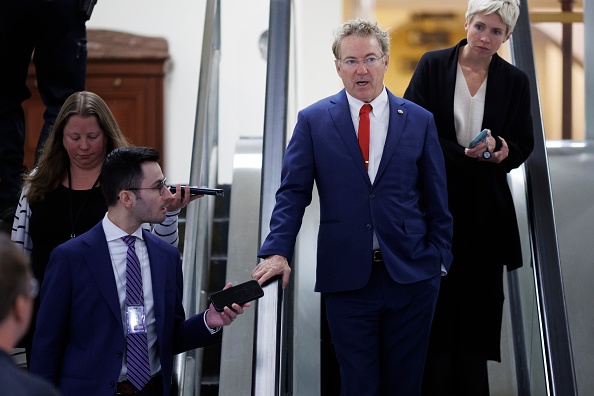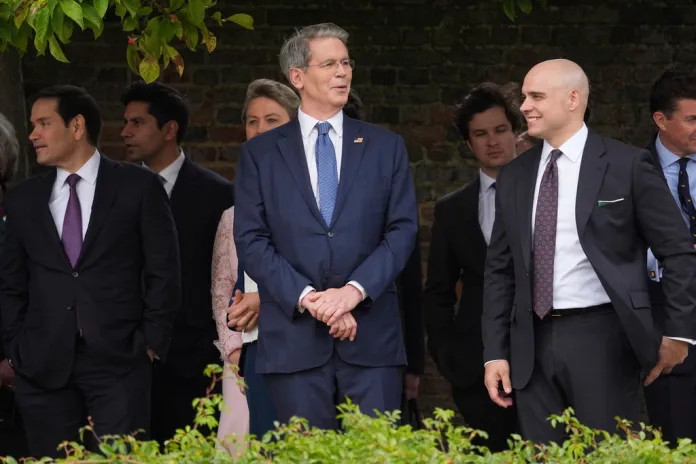Inflation held at 2.7% in July, allaying tariff fears
The U.S. inflation rate held steady at 2.7% for the year ending in July, according to the Bureau of Labor Statistics, easing concerns that tariffs were significantly driving up prices. While overall inflation remained flat, core inflation-which excludes volatile food and energy prices-rose unexpectedly to 3.1%. The data suggests that tariff-related price pressures might be limited and temporary. This mixed inflation picture reduces fears that tariffs imposed under President Donald Trump are causing persistent inflation increases and supports expectations that the Federal Reserve may cut interest rates later in the year to sustain economic growth. Despite tariff hikes on several imports, the economy remains strong, with low unemployment at 4.2% and robust GDP growth of 3% in the second quarter. Though, rising prices of certain goods, especially those sensitive to tariffs like household appliances, continue to weigh on consumer sentiment and political approval. Federal Reserve officials are divided on the inflation impact of tariffs,with some viewing it as a short-term effect unlikely to require long-term policy changes. Meanwhile, President Trump has pressured the Fed to reduce rates more aggressively but has recently softened threats to replace Fed Chairman Jerome Powell.
Inflation held at 2.7% in July, allaying tariff fears
Inflation held at 2.7% for the year ending in July in the consumer price index, the Bureau of Labor Statistics reported Tuesday, suggesting that the price pressures from tariffs were not as strong as originally feared.
Forecasters expected inflation to rise for a third straight month by a tenth of a percentage point to 2.8%.
However, core inflation, a measure that strips out the volatile categories of food and energy prices, rose two-tenths of a percentage point to 3.1%, higher than expected.
The mixed inflation picture for July will likely allay fears that President Donald Trump’s tariffs are pushing up prices. It is also likely to add to expectations that the Federal Reserve will move to cut its interest rate target in the second half of the year to prevent the economy from slowing.
For the moment, the effects of the tariffs are the main question mark looming over the U.S. macroeconomy. Higher tariffs went into effect for many countries around the world earlier this month, and tariffs on imports such as copper and automobiles have also taken effect in recent months.
If tariffs push up prices, that would also bring inflation further from the Fed’s target, which is 2%.
For that reason, the Fed has maintained an interest rate that would otherwise seem high, given that some interest rate-sensitive sectors, such as homebuilding, are showing signs of a slowdown, and that some labor market indicators are showing a pullback in hiring.
Still, some economists see a limited inflation threat from tariffs. For example, Christopher Waller, a member of the Fed’s board of governors, has argued that tariffs would only have a one-time effect on prices and are not likely to lead to durable inflation. He voted against the Fed’s decision in late July to hold interest rates steady, saying they should have instead been cut. Michelle Bowman, another board of governors member, also dissented from that decision. Both Waller and Bowman are thought to be under consideration as Trump picks a nominee to replace Chairman Jerome Powell when his term ends next year.
At the July monetary policy meeting, Powell said it was “reasonable” that tariffs might not have a lasting impact on inflation.
“But it is also possible that the inflationary effects could instead be more persistent, and that is a risk to be assessed and managed,” he said.
Powell has been under enormous pressure from Trump to lower rates. Trump has taken to calling him “Too Late,” arguing that he has been too slow to cut the rate target. Earlier this summer, Trump reportedly told allies that he planned to fire Powell. However, in recent weeks, he appears to have backed off that threat. He has openly discussed options for his replacement.
Overall, though, the economy appears to be in strong shape. At 4.2%, the unemployment rate is low by historical standards. Gross domestic product grew at a 3% rate in the second quarter, assuaging recession fears.
Still, rising prices, after years of punishing inflation, are a threat to economic sentiment, and to Trump’s approval ratings.
TRUMP TARIFF LETTERS: WHAT TO KNOW ABOUT THE NEW TRADE DEALS, RATES, AND ‘LIBERATION DAY’ PAUSE
Prices for some staples have come down during Trump’s time in office; notably, eggs and gas are cheaper than they were on Inauguration Day.
However, grocery prices overall have continued to drift up. And some categories of goods that are particularly exposed to higher tariffs, such as household appliances, have seen fast-rising prices.
" Conservative News Daily does not always share or support the views and opinions expressed here; they are just those of the writer."




